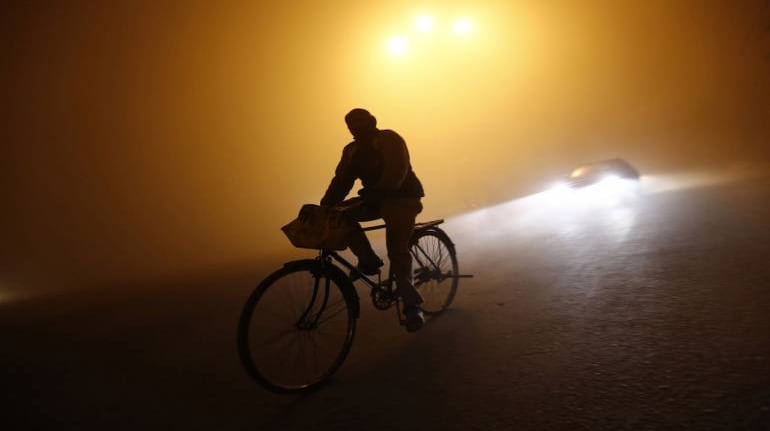There are several changes that need to occur before Mumbai — or any metro in India — can visualise being an Amsterdam-like biking haven. Besides better infrastructure, there would be a need for awareness, empathy on the streets and shedding of social stigma
Arun Janardhan
The Maharashtra government issued some guidelines at the end of last month with the phased easing of the lockdown from the first week of June. Among them was the clause, “People are actively encouraged to use cycling as a form of physical exercise as it automatically ensures social distancing.”
While the aspect of distancing does apply to cycling, the State’s encouragement of a growing trend, while making sense, also shows disconnect — between reality and aspiration.
Over the years, cycling as a form of leisure and exercise has grown in cities, such as Mumbai for example. Cyclists have increasingly populated the highways and scenic roads such as Marine Drive and Palm Beach Road in Navi Mumbai, especially on early Sunday mornings and holidays. Surfeit of sports stores such as Decathlon, which provide a gamut of bikes and stylish accessories, have further encouraged the practice. It’s not just MAMILS (middle-aged men in lycra) who pedal away furiously, but biking spans ages and social strata.
Several start-ups, such as OFO (acquired by Bounce), Yulu, Pedl (by Zoomcar), Pedal (by Ola), Mobycy (electric scooters) and Mobike, have acted swiftly to cash in on an estimated $1.2 billion bicycle-sharing industry in India. Many of them have started under the supposition that infrastructure catches up eventually with interest — though the current paranoid need for sanitisation may impact the ‘sharing’ industry in the short-term.
The lockdown since March 25 has added interesting dynamics to the mix — not including the tragic stories of people cycling hundreds of kilometres to get home. While cycle major Atlas shut down its last manufacturing unit on June 3 — albeit temporarily and ironically on World Bicycle Day — several others have had mixed luck.
British electric bike manufacturer, GoZero Mobility, saw a spike in demand of 300 percent as soon as the unlocking began, according to its Delhi-based chief executive officer Ankit Kumar (their data shows a peak in usage from 4-7:30pm when, pre-lockdown, people were busy working).
Abdul Rab Kazi, business manager of Everest Cycle Company, says since they opened their half-a-dozen stores in Navi Mumbai on June 6 after over two months, sales are back to normal though demand for cheaper bikes is higher in lieu of uncertainty in jobs.
The advantages of cycling are fairly obvious. The average traffic speed in Mumbai (18.5 kmph) and Bengaluru (18.7 kmph) indicates no time saved — a cyclist has an average speed of 20 kmph. Cycling to work could also lead to benefits of Rs 1.8 trillion — 1.6 percent of India’s GDP for 2015-16 — according to a study Benefits of Cycling in India: An Economic, Environmental and Social Assessment by The Energy and Resources Institute (Teri).
Besides, it generates zero carbon footprint and better health — by general estimates, a person burns about 300 calories in 30 minutes of cycling at an average speed of 20kmph. Point A to point B at negligible cost, with no environmental damage and better heart health seems like a win-win.
However, here’s where reality strikes hard.
Infrastructure in major cities does not support cycling. In Mumbai, for example, where roads are relatively narrow and packed with impatient, honking motorists, a cyclist is more likely to be knocked down than accommodated (54 percent of deaths due to road accidents in 2018 were two-wheeler riders, cyclists and pedestrians). During monsoons, when most roads develop craters, cycling can get harmful to life and limb.
When the Bandra-Kurla Complex (BKC) was being developed many years ago as the next big financial hub, it had wide roads and an ambitious cycling lane. That plan disintegrated soon after, as the lane was taken over for parking and driving during peak rush hour.
The weather in this city is not conducive to cycling for a majority of the year, either being too hot or too wet or both. Abhishek Avhad, an avid cyclist and triathlete, also mentions the elitist bias of corporate parks and security guards who look down upon cyclists. As part of a hospitality exchange programme for bikers called warmshowers.org, he has hosted over a dozen people from all over the world, all of whom have been shocked by the chaos and commotion on Mumbai’s streets.
Even if weather is not under the control of policy makers, there are several changes that need to occur before Mumbai — or any metro in India — can visualise being an Amsterdam-like biking haven. Besides better infrastructure, there would be a need for awareness, empathy on the streets and shedding of social stigma. A car is a status symbol — not just a means to travel — while a cycle is still seen as a poor man’s compulsion, as Avhad says.
While organisations such as the Smart Commute Foundation are working with multiple sectors to make Mumbai more bicycle-friendly, it might take a few generations for the shift to happen. The state government’s notification of encouragement will remain, for the moment, empty words on paper.
Arun Janardhan is a Mumbai-based freelance writer-editor. Views are personal.















